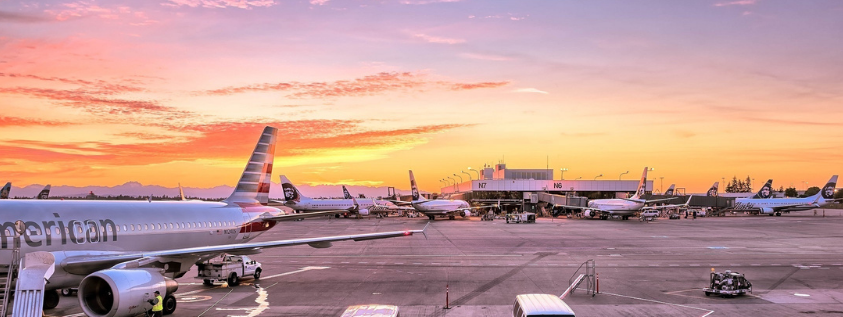Airport infrastructures are one of the key elements for carrying out aeronautical activities with guarantees, maintaining a high degree of safety, and linking the territory of countries and continents.
The phrase “a couple of kilometres of road lead nowhere, but a couple of kilometres of runway connect with the world”. It is all the more valid when we consider the enormous number of people and goods that travel through the skies of the world every day with an airport as their point of origin and destination.
There are many types of airports, airports, airports, hydroports… depending on their use and the volume of traffic they absorb. From airports that are real cities, such as Singapore-Changi, to small airports designed only for very specific uses. Courchevel, a mountain airport (altiport) in the French Alps designed to receive sport planes and small private jets visiting its ski resort, or the Luckla altiport at the foot of Mount Everest, are in this line. A small airport is almost the only link between the small village of Luckla and the outside world.
As you can see, the diversity of airfields and their uses is enormous, and each airport has its own certifications and has its own restrictions and permits to operate different types of aircraft. Today we are going to focus on the two most frequent types of airport in our geographical area: General Aviation Airports and Commercial Aviation Airports.
Commercial Aviation Airport
Commercial aviation airports are probably the first airports that come to mind when we think of an airport. Commercial aviation airports are those airports that are used for the transport of passengers and goods, and can be used for domestic or international flights.
In Spain we have more than 40 airports that operate as commercial aviation airports. Among them we find the airports with the highest volume of traffic in the country; Adolfo Suárez Madrid – Barajas, Josep Tarradellas Barcelona-El Prat, or Palma de Mallorca airport, which in addition to being used by millions of passengers a year move high volumes of cargo.
General Aviation Airport
General Aviation (G.A.) airports are airports whose main activity is not the transport of passengers or cargo, but services such as maintenance, long-term parking (as is the case of Teruel airport in Spain), surveillance, fire-fighting or rescue services, and pilot training. Among the different types of aircraft that can be found at a General Aviation Airport are light, ultralight (ULM), sport aircraft, private jets or helicopters.
Although general aviation is the majority in the world (in the USA it represents 1% of GDP), and in Europe there are many airfields in this category, in Spain there are only two general aviation airports: Cuatro Vientos Airport (Madrid) and Sabadell Airport.
At Sabadell Airport – where EAS Barcelona has its main flight base and houses its fleet in a hangar of 1,250 m2 plus another 300 m2 of offices – more than 60,000 operations are carried out annually. Our students’ training flights depart from this airport, with destinations – depending on each flight phase – as varied as the Balearic Islands, the south of France or the Cantabrian coast. In addition to the excellent geographical location of Sabadell airport, it is also close to one of the busiest international hubs in Europe, the Josep Tarradellas Barcelona-El Prat Airport, which allows a highly desirable interrelationship in different phases of training. Being able to operate in the most important General Aviation airport in Spain is undoubtedly a unique opportunity for pilots in training.
